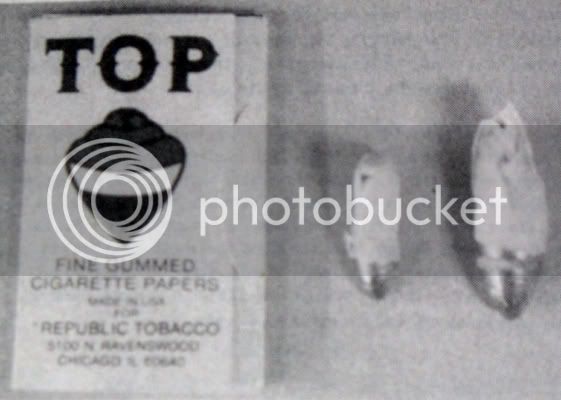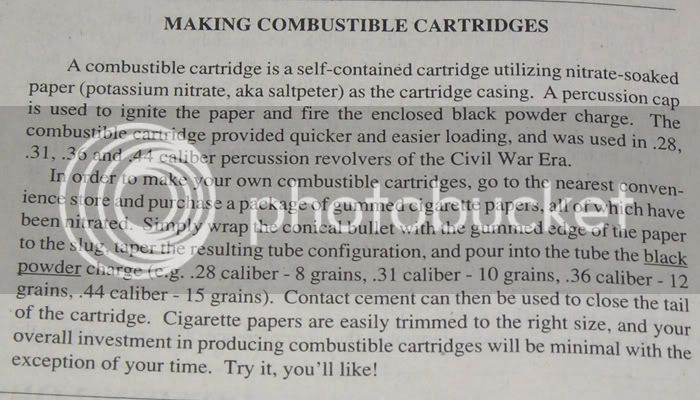A thought about paper cartridges:
I'm sure some folks will disagree with me, but IMO, if your using paper cartridges be extra careful about keeping the muzzle away from you (and others) when you reload. There may be some remaining burning pieces of paper left down in the bore from the last shot.
In over 30 years of shooting muzzleloaders, I have yet to see a muzzleloader fire while reloading although I'm sure it has happened.
I've often thought that one of the biggest reasons for the lack of accidental discharges is because there is nothing in there except powder, a patch and the ball and all of them are gone after the gun is fired.
Based on the loading proceedures for Cannons, which often do use paper or cloth bags to hold the powder there is little doubt in my mind that burning pieces of these containers are often left in the bore after the gun is fired.
If your using the paper cartridge like the Military did, where the cartridge is ripped and the powder poured down the bore, followed by the ball and paper there may not be a big risk, but if your using Nitrated paper (which is supposed to burn when the gun is fired) and ramming the powder and paper together under the ball you may be asking for problems.







